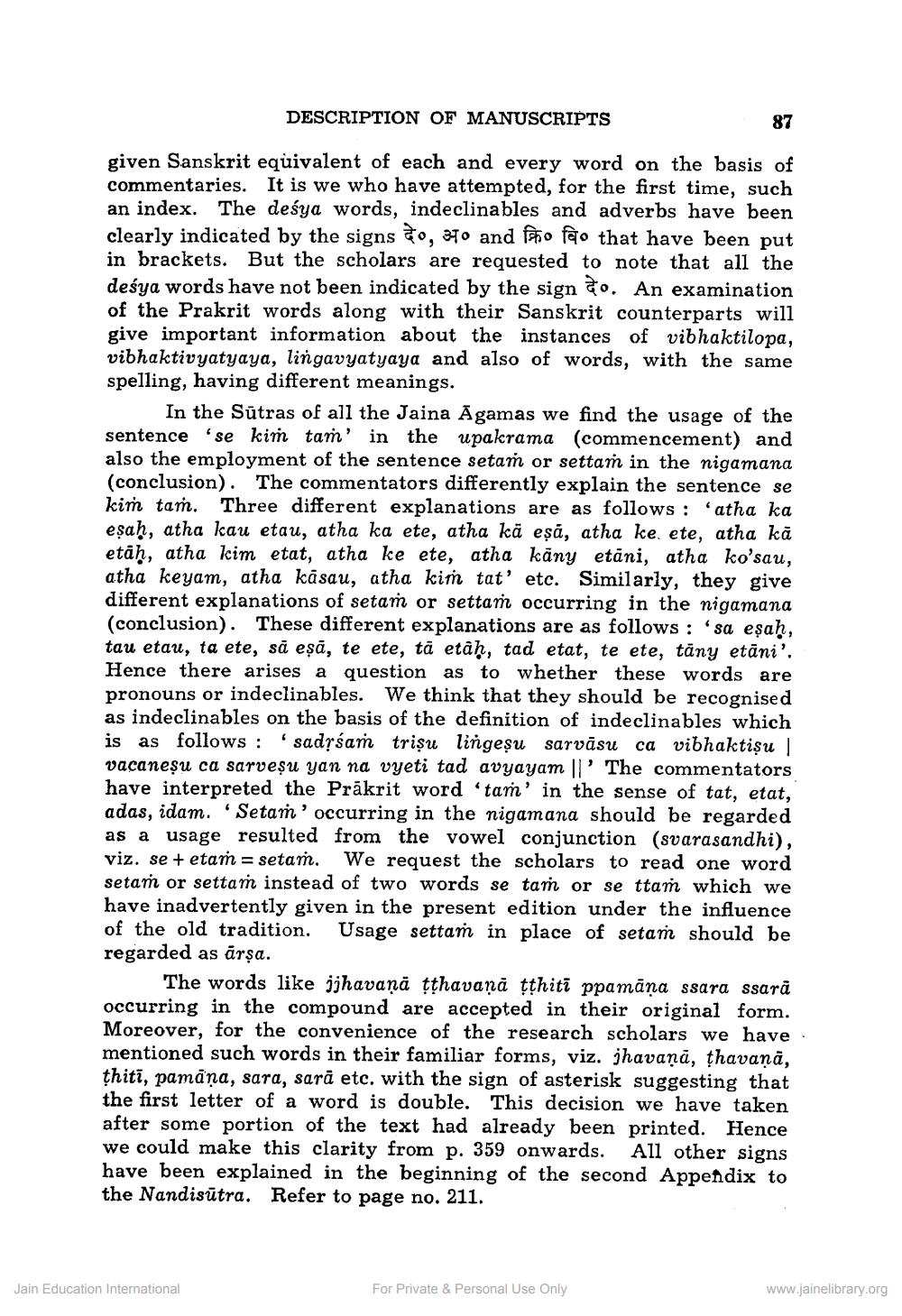________________
DESCRIPTION OF MANUSCRIPTS
given Sanskrit equivalent of each and every word on the basis of commentaries. It is we who have attempted, for the first time, such an index. The deśya words, indeclinables and adverbs have been clearly indicated by the signs o, o and fo fo that have been put in brackets. But the scholars are requested to note that all the deśya words have not been indicated by the sign o. An examination of the Prakrit words along with their Sanskrit counterparts will give important information about the instances of vibhaktilopa, vibhaktivyatyaya, lingavyatyaya and also of words, with the same spelling, having different meanings.
887
In the Sutras of all the Jaina Agamas we find the usage of the sentence 'se kim tam' in the upakrama (commencement) and also the employment of the sentence setam or settam in the nigamana (conclusion). The commentators differently explain the sentence se kim tam. Three different explanations are as follows: 'atha ka eṣaḥ, atha kau etau, atha ka ete, atha ka eṣā, atha ke. ete, atha kä etāḥ, atha kim etat, atha ke ete, atha kany etani, atha ko'sau, atha keyam, atha kasau, atha kim tat' etc. Similarly, they give different explanations of setam or settam occurring in the nigamana (conclusion). These different explanations are as follows: 'sa eṣaḥ, tau etau, ta ete, să eșă, te ete, tā etaḥ, tad etat, te ete, täny etani'. Hence there arises a question as to whether these words are pronouns or indeclinables. We think that they should be recognised as indeclinables on the basis of the definition of indeclinables which is as follows: 'sadṛśam trişu lingeṣu sarvāsu ca vibhaktiṣu | vacaneṣu ca sarveşu yan na vyeti tad avyayam ||' The commentators have interpreted the Prakrit word 'tam' in the sense of tat, etat, adas, idam. 'Setam' occurring in the nigamana should be regarded as a usage resulted from the vowel conjunction (svarasandhi), viz. se+etam setam. We request the scholars to read one word setam or settam instead of two words se tam or se ttam which we have inadvertently given in the present edition under the influence of the old tradition. Usage settam in place of setam should be regarded as arṣa.
The words like jjhavana ṭṭhavana ṭṭhiti ppamāņa ssara ssarā occurring in the compound are accepted in their original form. Moreover, for the convenience of the research scholars we have mentioned such words in their familiar forms, viz. jhavana, thavana, thiti, pamana, sara, sară etc. with the sign of asterisk suggesting that the first letter of a word is double. This decision we have taken after some portion of the text had already been printed. Hence we could make this clarity from p. 359 onwards. All other signs have been explained in the beginning of the second Appendix to the Nandisutra. Refer to page no. 211.
Jain Education International
For Private & Personal Use Only
www.jainelibrary.org




